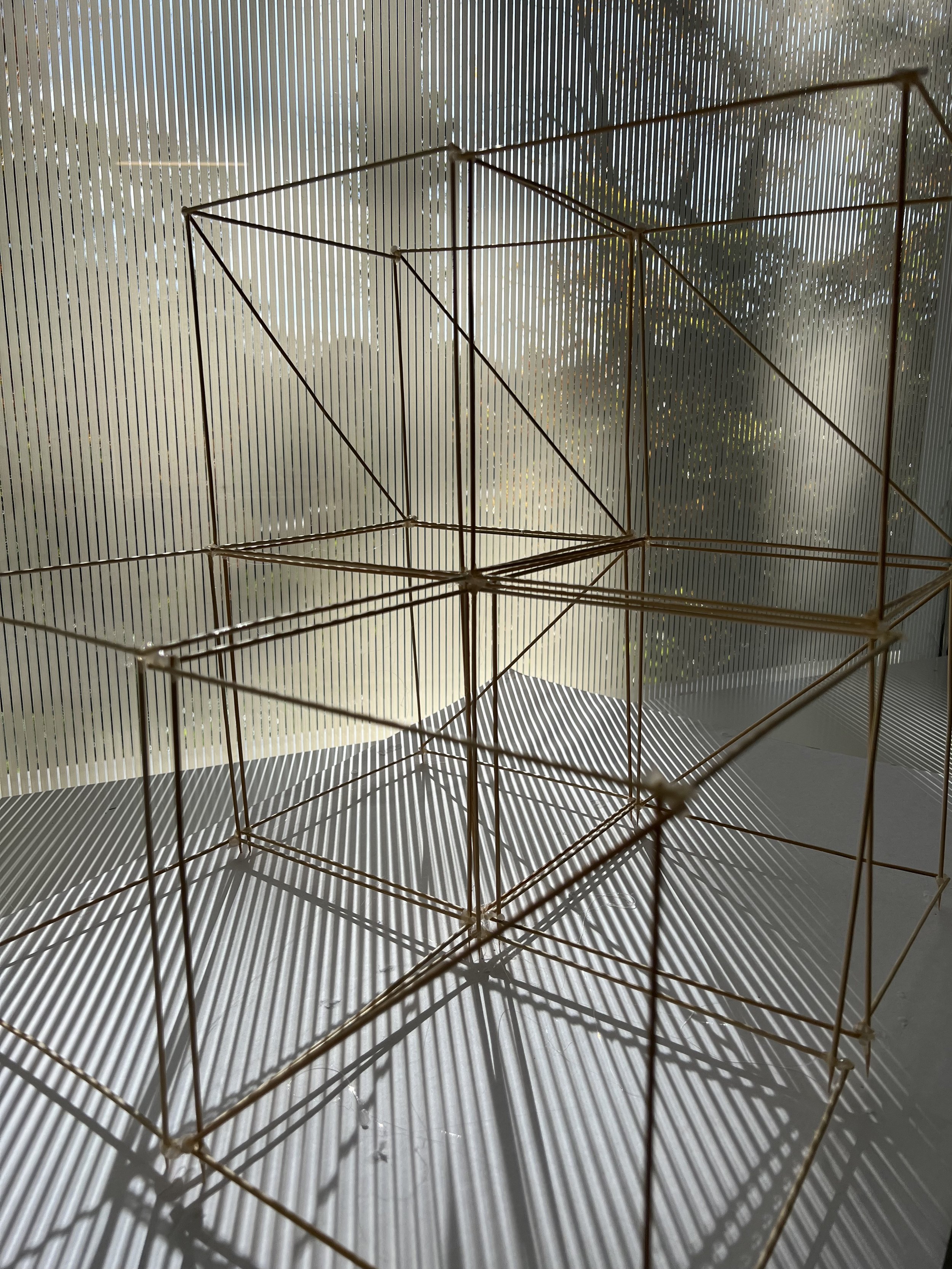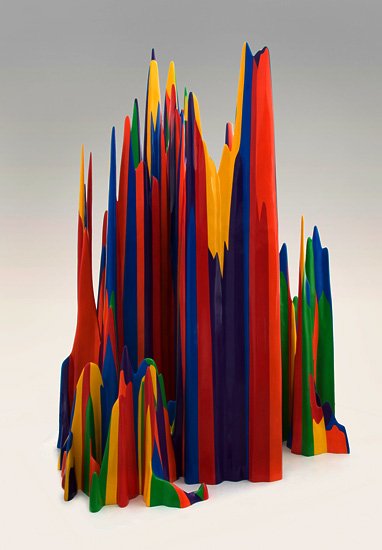BBQ Skewer Structure
The Assignment:
Using 8" long sections of bbq skewers or very slender wood dowels, build a matrix of 8x8x8 cubes with generous blobs of hot glue at the joints. Matrix should be a minimum of 2x2 modules in plan, and at least two modules high. And it should be squishy. Refer to the images of Sol Lewitt pieces in the Files tab as a prompt. Once you construct the matrix (all with 90 deg angles) start adding diagonal elements to develop rigidity in the 'sloppy' frame.
4 x 4 x 4, 1960 - 1969 | Sol LeWitt
13/3, 1981 | Sol LeWitt
Once the class set down their grids in the light, I was immediately obsessed with the shadows that formed. The cubes started interacting on the ground creating a new set of lines.
The simple cube structure I created has a 4 cube base with two cubes on the second level. Each cube can exist independently meaning no cube is sharing a line with another.
I used the pointy ends of the bbq skewers to hold the structure on the piece of foam core. I tried to use the least amount of diagonals to create a structure that moved but did not fall apart when there was little pressure applied. The structure could have benefited from additional skewers connecting the second level of cubes to the first instead of having an open space.
Even though my structure was not the most rigid or complicated, I still appreciate the shadows it created. In the video above, one can see how much shadows of an object change depending on angle and the distance to from the ground.
Janelle and her well deserved donuts
Fun Fact:
When I first saw the images of Sol LeWitt’s work, I remembered seeing it growing up in the Virginia Museum of Fine Arts. The VMFA is in Richmond, Virginia, about half an hour from where I live, so I have been there many times. Then the cube structure reminded me of this sculpture called “Splotch.”
My sister took me on my first trip to the VMFA when I was in middle school. We were there for hours, going in the correct chronological order from Egyptian art to French horse paintings and, finally, the contemporary art exhibit. I was tired by this point and this trip may or may not have had me questioning my interest in fine art when I came across the most beautiful sculpture I have ever seen. It was so interesting and colorful. I could not comprehend what it was made out of or why it should exist in the first place. I stared at it for a long time until my sister pulled me away because there was more to see. Right before we left, I believe we came back to see it again. I was mesmerized. We visited the gift shop on the way out and I was ecstatic to find a “Splotch” postcard. For $1 I could have my new favorite piece of contemporary art at home to remember forever (the reality was it was stuffed in a drawer somewhere).
The next time we went to the VMFA, I patiently waited through the usual museum route until I could be reunited with “Splotch.” When we made it to the large room on the third floor it was nowhere to be found. That is when I learned about rotating exhibits :( I was quite disappointed. Nothing could compare to “Splotch.” I tried to explain to my sister this sculpture that I wished to see and she had no idea what I was talking about. I mean, fair? I had no idea who it was by, what it was called, or what it was made of. All I could say was, “It was a blobby sculpture of color and it was bigger than me.” I may never see “Splotch” again.
All of this popped up in my brain when I was researching Sol LeWitt’s work before starting this assignment. I was scrolling through google images and what do I see? The best piece of contemporary art I have ever seen:
Sol LeWitt (American, 1928–2007)
Splotch #22, 2007
Acrylic on fiberglass
ca. 148 x 96 x 86 inches
Virginia Museum of Fine Arts
May I just add that this is quite different than his cube work. This is what the google image search looked like:
Come to find out, the “Splotch #22” is the last one he created. He passed away in April of 2007. Thank you Tim for throwing me on this rabbit hunt.














